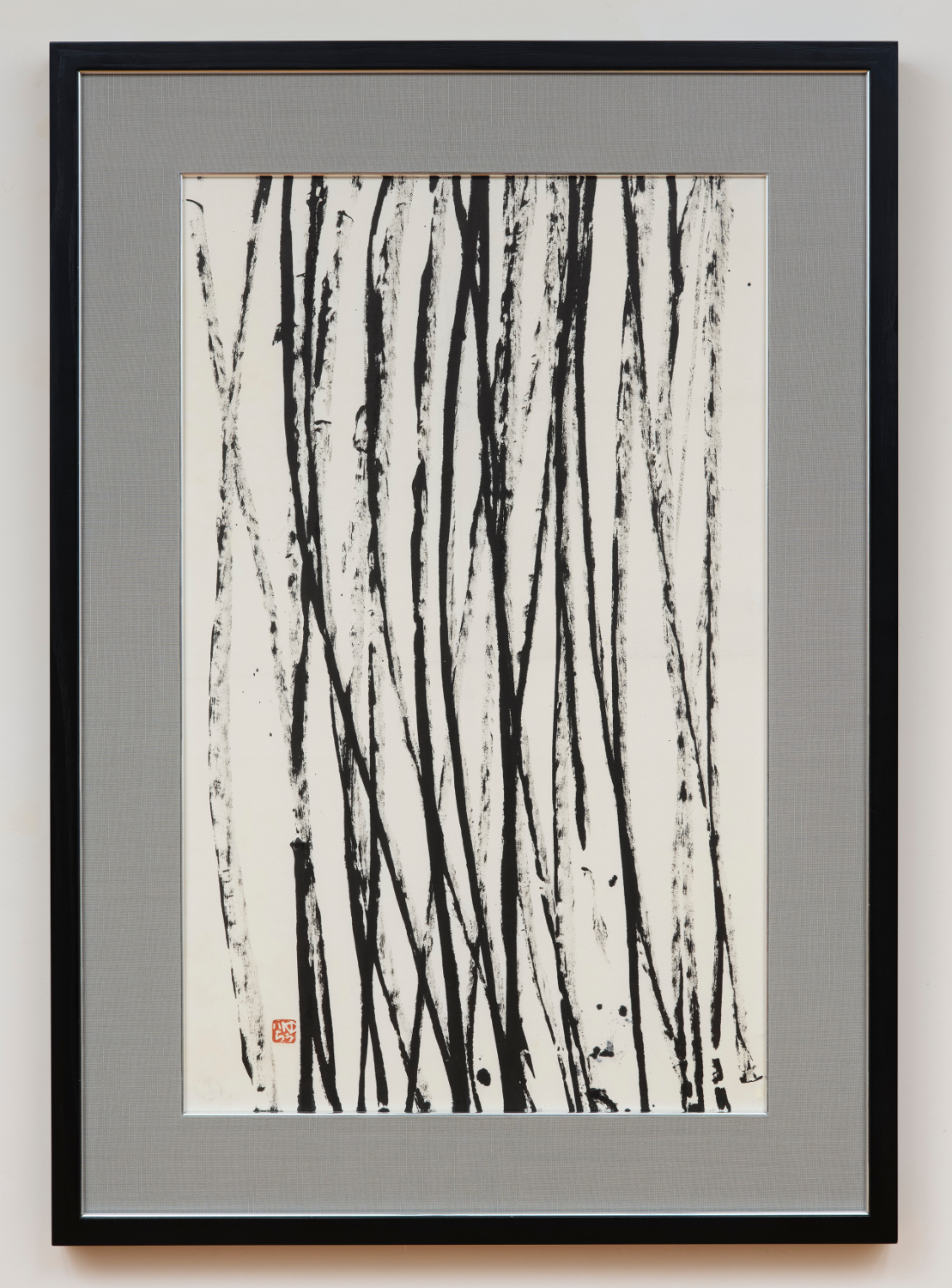
Yuichi Inoue
1916–1985
ART WEEK TOKYO | NOVEMBER 2–5, 2023
SECTION 03
Here’s the thing about avant-garde calligraphy in Japan: Even when a work contains no actual script, it still has to be grounded in the formal techniques and aesthetics of the East Asian calligraphic tradition. Otherwise it would be indistinguishable from ink drawing.
But if that’s the case, then how could people who are unfamiliar with Chinese characters fully appreciate the work? Calligraphy is an unlikely candidate to ever become a global art form. (It has been marginalized even in Japan itself. Over the course of the country’s modernization, calligraphy was relegated to a separate category from painting and at times even dismissed as art. But such developments were tied to institutional structures, and elaborating on them isn’t very productive. My focus here is squarely on aesthetic concerns.)
Is there any alternative possibility for calligraphy to escape its formal limitations? Maybe it could be reconceptualized as an investigation into what writing texts and making signs means to humans in general.
For example, the postwar-era experimental calligrapher and photographer Shigeru Onishi (cat. no. 15), who was also a mathematician, proposed that “to know the conditions of the subject’s formation…it is crucial to form images of things rid of all constraints, including the dictates of mathematics and the physics of time and space.” Of course there is no way of proving these “images of things rid of all constraints” through bokusho, or the “ink images” of abstract calligraphy, which are ultimately works of art subject to the material constraints of the real world. But Onishi could perceive a radical new possibility for calligraphy precisely because he had a different background than that of traditional calligraphers.
The practice of the poet Gozo Yoshimasu (cat. nos. 16–18) stands out among more recent developments. Yoshimasu makes his manuscripts into artworks. Once he has drawn in rules and prepared a place for his écriture to happen, the process of writing down huge volumes of text ultimately leads him back to gestural techniques, such as pouring and poking, that underscore the flatness and horizontality of the composition. This is evidence of the artist’s highly deconstructive approach, in which he attempts to interrogate, break down, and then once again reactivate the sites that texts/signs produce.